
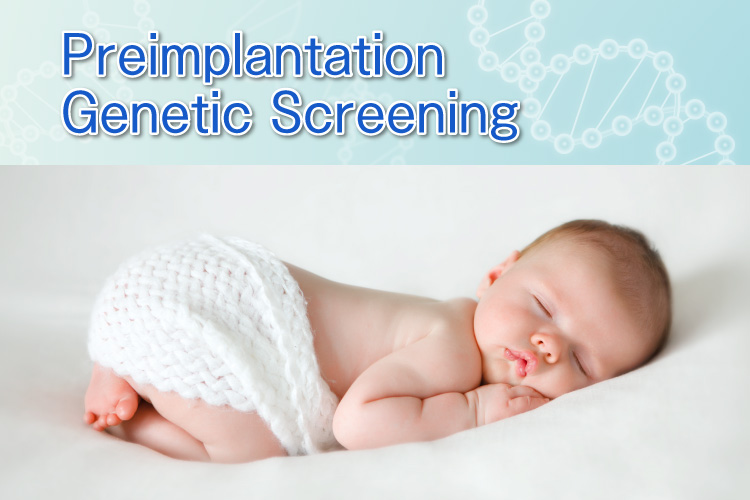
Preimplantation Genetic Testing for Aneuploidy (PGT-A)
What is Preimplantation Genetic Testing for Aneuploidy?
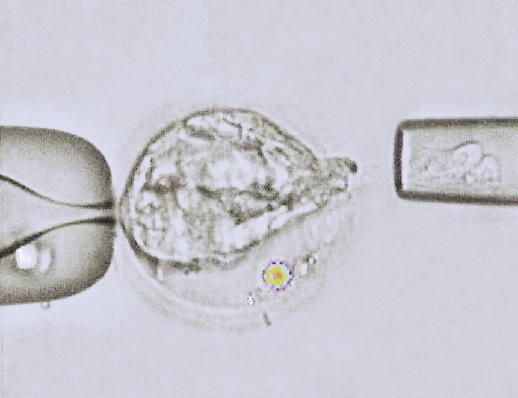
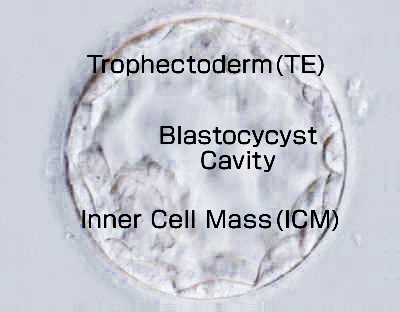
Preimplantation genetic diagnosis is a test to check for chromosomal abnormalities using cells sampled from blastocysts created through microinsemination. Also possible through this method is Preimplantation Genetic Testing for Aneuploidy (or PGS; Preimplantation Genetic Screening) or PGT-A. Around 5~7 days after fertilization a sample portion of trophectoderm cells (the cells that will form the placenta) are taken from the blastocyst, DNA is extracted, amplified and then analyzed by a method called Next Generation Sequencing (NGS).
Merits and Demerits
〔 Merits 〕
It is understood that it is chromosomal anomalies of the zygote (embryo) that are the common causes of non-implantation and miscarriage. If the presence of such chromosomal anomalies of the embryo used in the transfer is known, that embryo can easily be removed from the transferrable embryos, thus resulting in a lower rate of miscarriages, and the time lost in fertility treatment.
Additionally, if a congenital disease is discovered by prenatal examination during the pregnancy, there is a possibility to make a pressured decision on whether to deliver or not, but in regards to congenital diseases that happen by chromosomal anomalies, that possibility can be lowered by doing PGT-A.
〔 Demerits 〕
There is possibility of damage to the blastocyst such as squashing the embryo or growth stop by sampling the TE cells (by doing PGT-A there is no chance of inducing chromosomal abnormalities).
A fresh embryo transfer cannot be performed when doing PGT-A because it will take a few weeks for the analysis result to come back. The blastocyst that had TE cells removed will be cryopreserved, and once the PGT-A results are known a thawed embryo transfer will be done.
Even when chromosomal abnormalities are not found in the embryo that was transferred after doing PGT-A, there are rare cases of chromosomal abnormalities being found after the child’s birth. This may be caused by a case where the TE cell (the part to be a future placenta) used in the examination and the chromosome of the fetal cell (ICM) are different, or a microdeletion that cannot be detected with NGS.
Method
- OPU, micro-insemination (ICSI), and a blastocyst culture are performed.
- TE biopsy is performed (TE cells are taken from the blastocyst).
- Chromosomes are amplified by the PCR method.
- Chromosomes are analyzed by the method called Next Generation Sequencing; NGS.
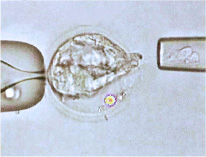
TE biopsy
![]()
![]()
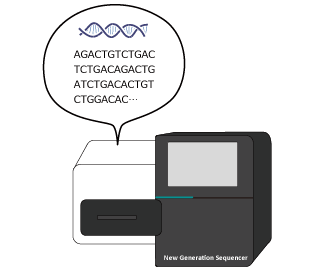
Chromosomes amplified (PCR Method)
![]()
![]()
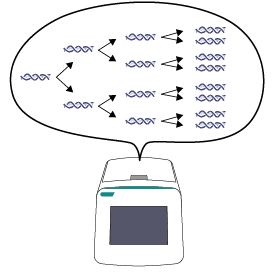
Chromosomes analyzed (NGS)
Results
In NGS, you can see how many chromosomes exist from 1 thru 22 and the sex chromosomes(X chromosome, Y chromosome).
The analysis result of NGS is represented by a graph like the figure below, and when there are three chromosomes (trisomy) it is a blue line, and when there is only one chromosome (monosomy) it is plotted on a red line. Since there are usually two chromosomes, if there is no chromosomal abnormality, it will be plotted on a straight line on the baseline. Since sex chromosomes are 2 chromosomes for women, they are plotted on the baseline and further down the line of monosomy because there is no Y chromosome. For men, there is 1 X and Y chromosomes respectively, so they are plotted on the line of monosomy.
[Graph 1] No chromosomal anomalies, male (XY)
![[Graph 1] No chromosomal anomalies, male (XY)](img/cha_graph01_eg.jpg)
In Graph 1, chromosome number 1~22 are on the line, and X and Y chromosome are found on the monosomy line meaning it is a boy.
[Graph 2] 9 Trisomy, 18 Monosomy, Sex chromosome anomaly (XXY)
![[Graph 2] 9 Trisomy, 18 Monosomy, Sex chromosome anomaly (XXY)](img/cha_graph02_eg.jpg)
In Graph 1, chromosome number 1~22 are on the line, and X and Y chromosome are found on the monosomy line meaning it is a boy.
[Graph 3] 3 Trisomy Mosaic, 16 Monosomy Mosaic, female (XX)
![[Graph 3] 3 Trisomy Mosaic, 16 Monosomy Mosaic, female (XX)](img/cha_graph03_eg.jpg)
In Graph 3, a mosaicism is confirmed. This mosaicism is the condition of having a mixture of cells from 1 blastocyst with chromosomal anomalies confirmed and unconfirmed. On a graph if it is a trisomy mosaic, then it will be plotted between the trisomy line and base line, and if it is a monosomy mosaic, between the monosomy line and base line respectively. On this graph, 2 mosaics can be seen, and it is understood that it is something of a mixture of the 3rd chromosome’s regular and trisomy cells and the 18th chromosome’s regular and monosomy cells.
※ In regards to how mosaic blastocysts are handled, there is no public opinion among experts, but it is known that healthy children will be born at a certain rate by extent.

Application
Please read the "Explanation of Preimplantation Genetic Testing for Aneuploidy (PGT-A)" and send the following contents to english_help@ogms.biz Also, please submit the "PGT-A Consent Form" by post. The address where to post the consent form will be sent to you via email reply once we receive your application.Once the application email and consent form has been received, your request for PGT-A will be confirmed.
| Applicatio n by E-MAIL | |
|---|---|
| Subject : | Application for PGT-A |
| Body : | ① Your Name ② Your Address ③ Your Phone Number ④ Name of the medical institution where oocyte retrieval will take place and the examination card number. (Please provide the individual ID for each institution, not a common ID within the medical corporation.) |
| Documents to confirm and submit | |
|---|---|
| Please read carefully. Explanation of Preimplantation Genetic Testing for Aneuploidy (PGT-A,PGS) |
|
| Please submit by the OPU day. Preimplantation Genetic Testing for Aneuploidy (PGT-A,PGS) Consent Form |
|
It may take some time to reply to emails received over night, on weekends and holidays, and over winter and summer holidays.
Additionally, it may take time to give answers based on the content of the inquiry.
Inquiries │
We accept inquiries by email. Tokyo · Osaka │ O.G.M.S.

Preimplantation Testing for Aneuploidy (PGT-A)
english_help@ogms.biz
The email address may vary depending on the content of your inquiry. Please check the mail address on each service page.
There may be a delayed reply to inquiries received at night, weekends/holidays, winter and summer break.
It may take some time to reply depending on the nature of the inquiry.